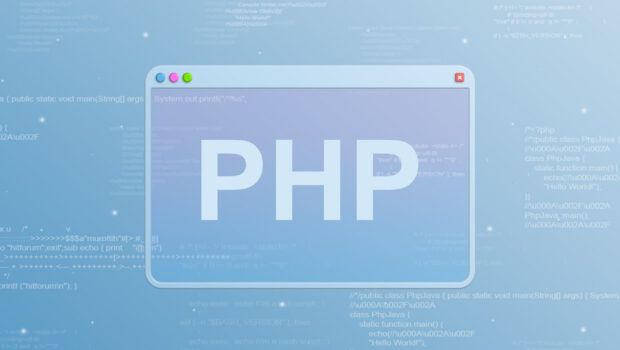Benefits of Using CakePHP for Web Development
Building online applications that are reliable, scalable, and easy to maintain requires careful consideration when choosing the right framework. There are a lot of frameworks available in the market such as CakePHP, Laravel, WordPress, Rails, CodeIgniter, and many others. However, CakePHP is known for speeding up creation and providing numerous advantages for organizations and professionals. This is an open-source MVC framework that significantly simplifies the process of developing web applications. Its libraries help to minimize the burden of handling the most common tasks and functions.
In this article, we’ll understand the in-depth meaning, functions, and significant key benefits of CakePHP development for website-building projects.
What is CakePHP?
CakePHP is an open-source web development framework that is known for its simplicity and versatility. This framework has gained a loyal following among developers for its ability to streamline the web development process. The primary objective of CakePHP is to facilitate the creation of structured and efficient web applications with ease and on time.
The following are the robust features you will enjoy while creating the website.
- Compatible with PHP versions 4 & 5.
- Code generation.
- View Helpers for JavaScript, HTML Forms, and more.
- Localization.
- MVC architecture.
- Request dispatcher with custom URLs and routes.
- Email, Cookie, Security, and Request handling components.
- Built-in validation.
- Flexible Caching
Functions of CakePHP
At its core, the CakePHP request cycle involves a series of organized steps that take place when a user requests a page or resource in your web application. These steps ensure that the right content is delivered to the user’s browser efficiently. Here are the steps:
- The journey begins with the web server’s rewrite rules, which direct the incoming request to webroot/index.php.
- Once the request lands in webroot/index.php, your application’s autoloader and bootstrap files are executed to proceed with the request.
- In CakePHP, dispatch filters can be configured to handle the request at this stage. These filters are instrumental in preprocessing the request and generating a response.
- The dispatcher selects the appropriate controller and action based on your routing rules. Routing is the heart of CakePHP, as it determines which piece of code will handle the request.
- With the controller and action identified, CakePHP now calls the controller’s action. Here, the controller interacts with the required Models and Components.
- Models- It manage the application’s data.
- Components- It provides reusable functionality.
A well-designed architecture at this stage ensures efficient data handling and processing.
- Once the controller has processed the request and possibly retrieved data from the Models. It delegates the responsibility of response creation to the View for generating the output based on the model data.
- To create the response body & headers, the View utilizes Helpers and Cells. These tools contribute to the dynamic nature of CakePHP.
- Finally, the crafted response is sent back to the client, ensuring that the user receives the requested content.
Notable Advantages of CakePHP for Website Development
The following are the detailed benefits of using CakePHP.
Accelerating Developmental Pace
CakePHP follows a “convention over configuration” (CoC) philosophy, meaning it ships with preset rules and defaults considered reasonable by developers, eliminating the need to make similar judgments again when developing web applications with CakePHP versus starting from scratch. As a result, the code and effort required for building fully functional web apps with CakePHP is significantly less.
MVC architecture
CakePHP’s Model-View-Controller (MVC) architecture makes life simpler by encouraging a clear separation of responsibilities within an application. By doing so, management and maintenance tasks become much easier to perform while code reuse increases significantly, and multiple developers can work productively together on one project at once. Furthermore, this architecture facilitates testing the functionality of individual components more quickly, leading to software that is more dependable and error-free.
An ORM that’s built in directly
CakePHP features an efficient Object-Relational Mapping (ORM) technology to simplify interaction between objects and databases. By working with PHP objects instead of writing long SQL queries, developers are able to simplify database operations while decreasing vulnerability against SQL injection attacks. The ORM also supports multiple database engines, so developers can select one best suited for their specific project requirements.
Scaffolding Based on CRUD
CakePHP’s CRUD scaffolding automatically creates database table views and controllers. CRUD stands for Create, Read, Update, Delete; with this feature, developers are easily able to implement basic CRUD capabilities with minimal code written – providing them with a solid starting point for each project they undertake. As with most helpful starting points, developers can simply adapt or enhance this code base for optimal project results.
Pre-Installed Security Measures
CakePHP Programming was developed with web security in mind from its inception. Built-in input validation, protection against SQL injection, cross-site scripting (XSS), and cross-site request forgery (CSRF) protection are just some of the many security features included with this software to assist developers in protecting their apps against typical security risks.
Authentication and Authorization
CakePHP’s fundamental authentication and authorization mechanisms simplify user access to app components. CakePHP’s flexible architecture enables it to perform many jobs efficiently; whether that means managing user roles and permissions or developing unique authentication techniques.
Adaptable Templates with Built-In Helpers
CakePHP Programming comes equipped with an extensive set of template aids that make building views much simpler. Helpers such as HTML, Form, and Paginator make creating pages simple by automating the generation of HTML elements, forms, and paginated data based on conventions set forth by its framework, thus guaranteeing consistent code resulting from these helpers.
Explore A Selection of Libraries and Plugins
CakePHP has long been recognized for its vibrant community, which has contributed an abundance of libraries and plugins over time. You can make your development experience smoother using these add-ons which offer pre-built solutions for common responsibilities like authentication, caching, and email management – saving both time and effort in the development process.
Testing Out Ideas and Discovering Bugs
Maintaining quality web apps requires rigorous testing and debugging. CakePHP’s integrated testing tools make this easier for developers by making it simple to create and run unit tests, integration tests, functional tests, and error handling/debugging features that help identify issues quickly as they develop the application. Additionally, error handling/debugging capabilities make identifying any potential issues or solutions much simpler while creating applications from the framework itself.
Community and Documentation
CakePHP boasts an active community of developers and fans who use and support its software, providing developers with access to numerous resources such as discussion boards, manuals, tutorials, and blogs to assist in navigating its framework. Developers are quickly able to locate solutions to common difficulties while remaining up-to-date with developments within their ecosystem with readily available resources at hand.
As your online application expands, scalability becomes ever more crucial. Thanks to CakePHP’s modular architecture and caching methods, scaling will become much simpler; caching data, views, and database queries can reduce server burden while speeding up response times, creating an excellent experience even during times of high traffic volumes.
Cost-effectiveness
CakePHP, as an open-source framework, does not impose any fees for use or licensing. For startups and smaller businesses wishing to develop feature-rich web apps without high upfront expenses, it is an intriguing option.
Continued and Continuous Improvements
CakePHP development teams routinely release updates and upgrades to improve functionality, security, and speed. You can take advantage of these moving forward changes and ensure your application meets web development best practices by utilizing CakePHP.
Conclusion
In conclusion, CakePHP is a powerful web development framework for building scalable, secure, and feature-rich online apps. As it adheres to best standards while emphasizing rapid development speed and has strong community support, it makes CakePHP an invaluable asset in web development – exploring its capabilities will open new avenues of online application creation regardless of whether you are an experienced web developer or just beginning your journey into web development.
Cover Image by Freepik











![Hottest Digital Advertising Trends in 2017 [Infographic]](https://technofaq.org/wp-content/uploads/2017/05/Digital_Advertising_Trends_in_2017-150x150.png)




